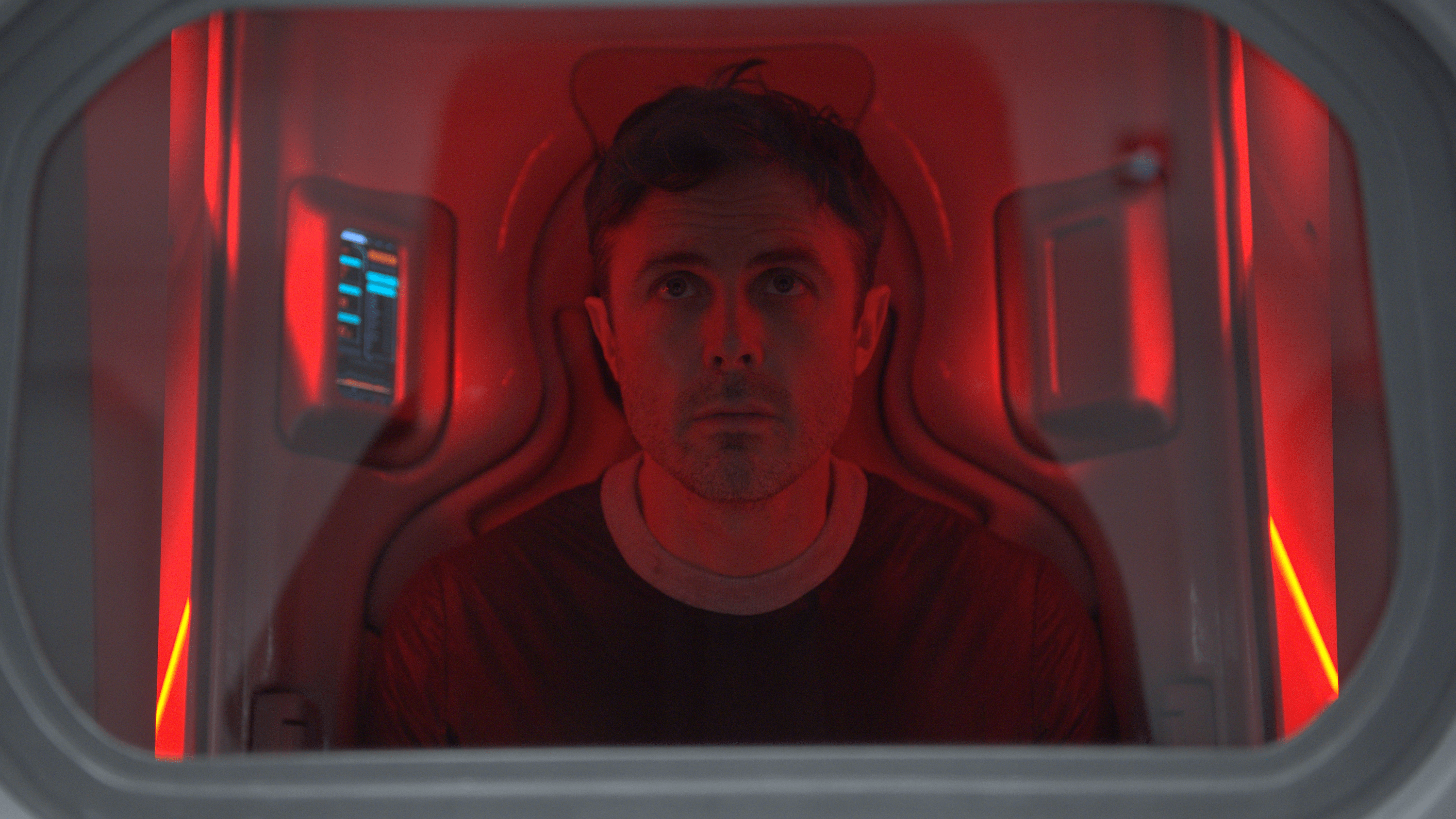[Editor’s note: There are massive spoilers in the article below.]
Set in the near future, “Slingshot” presents one of the great paranoid-in-space (or is he?) thrillers of recent years. Set during a years-long mission to Saturn’s moon manned by three astronauts (accompanied by plenty of flashbacks), Mikael Håfström’s drama keeps the audience as uneasy as Casey Affleck’s increasingly baffled astronaut, John, who is seeing things that aren’t there but also some things that might be all too horrifying real within the confines of the spaceship he shares with Laurence Fishburne and Tomer Capone. The ship’s design only magnifies the feeling that something lurks just beyond that curve in the corridor — something neither John nor the viewer really want to comprehend.
But the ship came together precisely because production designer Barry Chusid needed to grapple with the realities of production. “We were under all these restraints in terms of time and money and resources and all these things,” Chusid told IndieWire. “And I was like, ‘How can we be as efficient as possible?’ We have all these scenes where there’s movement and things are connected. I looked and found my original original sketch from this thing. And it turns out that it’s circular in form with these wheels off of it [which is what the ship ended up built as]. The entire set was built as a ship, so you really felt this connection.”
That sense of interconnectedness adds to the tension, as John finds himself facing the age-old paranoia question of whom to believe. Ultimately, we realize that he can’t trust anyone because he’s been alone on the ship; the other two astronauts were hallucinations.
Though we know something is amiss, the clean lines of the spaceship and the frankly upscale decor and lighting go a long way towards convincing us of the basic truth of what we are witnessing. Turns out, Chusid was manipulating us all along. The look of the ship purposefully echos the design of upscale airplane cabins. Those layout, shape, and color choices create the same sense of calm and trust for John that airlines want us to feel when we’re not on solid ground, either.
“I played it as if you’re on Emirates or something, just that idea that you had that kind of familiarization with it,” Chusid said. “So you’re comfortable in that way, when you walk on and you walk through first class and you go into economy and you can see the stuff happening at the back, but you don’t know exactly what’s going on, or you can see up in the front where the pilots are, but you can’t quite see it. This sort of practical ground plan configuration allowed us to do that,.”
Except “Slingshot” has one more twist up its sleeve: John finally makes contact with Earth and is informed he’s never actually gone to space; he’s a couple hundred feet below ground in a simulator to see if he could survive the solitude. An earthquake caused a cave-in, and now he has to make his way out of the ship and above ground.
As Fishburne’s imaginary captain implores him to stay inside, claiming they’re truly in space, John opens the door and steps onto a metal walkway surrounded by debris from the earthquake. But wait! There is one more twist: John opens a second door and hurtles silently into space because the underground cavern was also a hallucination, one rendered in painstaking detail by Chusid to create in the audience the same false sense of security as John feels. Audiences familiar with Håfström’s “1408” should have been prepared, but the final reveal is nonetheless shocking — in no small part because Chusid prepared both hallucination and reality as realistically as possible.
“I drew it both ways: as a ship in space and as he’s underground. And I went in a totally literal way. If this is the way it is, this is what it would look like. And I just followed it in a very pragmatic, familiar way, because I’m trying to always ask myself how can I [relay] this so that the audience is going to say, ‘Oh yeah, that’s what it would be,’” Chusid said.
The result is one of the great final twists in recent memory, one that “Slingshot” (and Chusid) had been building up to for the film‘s duration — and richly earned.




